One (ish) part lime to three (ish) parts sand, and then water.
I say ‘ish’ because spades are not accurate measuring devices and chucking a few extra spades of sand in for good luck feels like a good thing to do each time.
I ferry the sand up in one of the two wheelbarrows (yet another thing in the now very long list of things I thought very unlikely in my life a few years ago - having two brouettes) from its pile in the hangar, having first sieved it to get rid of undesirable contaminents; read: old cat mess from the previous owner’s barn cat.
The bétonniere doesn’t have an on/off switch so it’s a plug in/plug out operation situation. We can’t complain though as the cement mixer did come free with the house, as did the pile of sand. In case we wanted to do more pointing, of course.
And it’s just as well too, as beside this job - the interior walls of our second gite that we’re renovating for this new season - there is a lot of walls elsewhere that could use repointing.
I quickly get the hang of how wet we need the mixture and how long to mix it for (both wetter and longer than you’d think it turns out). The first one or two are a bit dry, or not mixed enough.
From there the mix goes into a flexible plastic bucket, then is left to rest for 10 mins or so.
With assorted trowels at the ready and gloves on, we wet the wall with one of those plant-sprayer-with-pump devices for better adhesion, and make a start. Two dollops with the bucket trowel onto the hawk, and from there proceed to shove pointing into the wall like there’s no tomorrow.
Larger crevices and gaps are best served by shoving an appropriately fitting stone into gap first, then pointing around after.
It turns out to be very satisfying work.
Finding the right stone for the right gap, shaping it with a few whacks of the mallet and hammering it in.

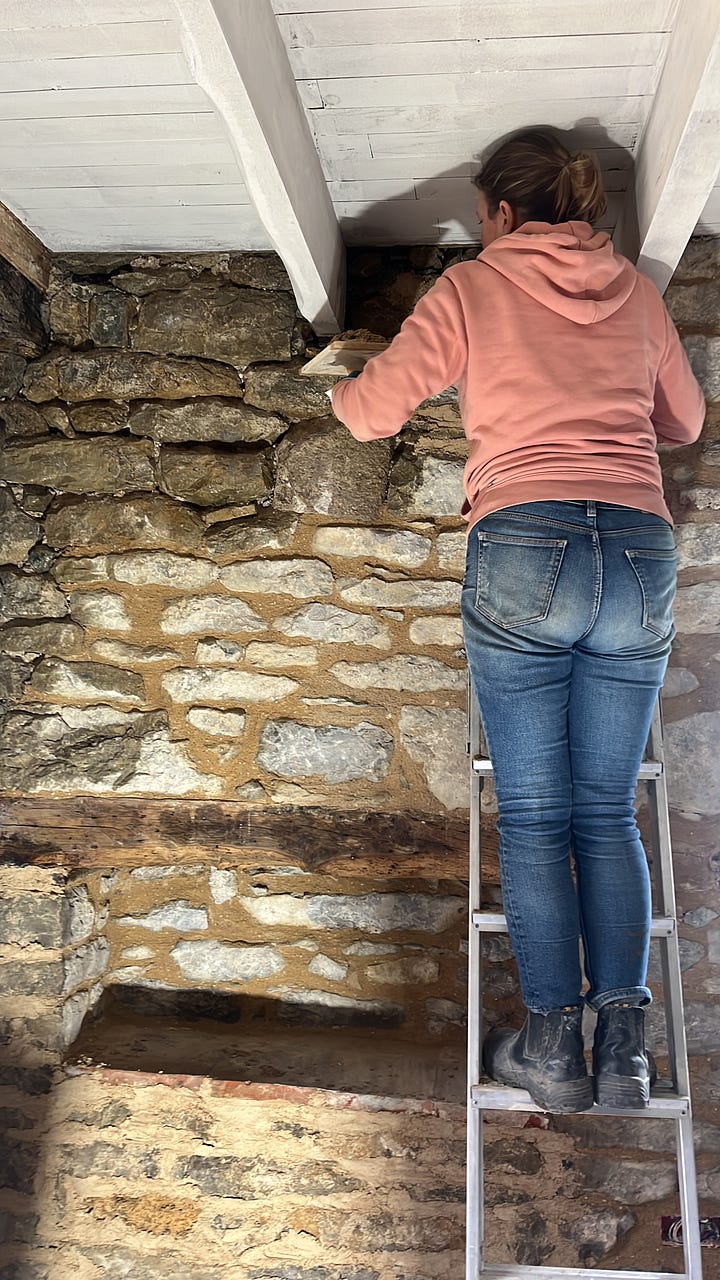
The satisfaction of getting less pointing mix on the floor as you get better with the trowel.
Having to use your hands less to do awkward spots.
I even briefly considered at one point whether I could do it for a living but quickly reached the conclusion of no, as customers would obviously want a professional finish everytime and no way I could do that. But also because of the incessant drying action of lime; leeching moisture from your hands, even with relatively heavy duty gloves on. This is why using your hands is not particularly recommended.
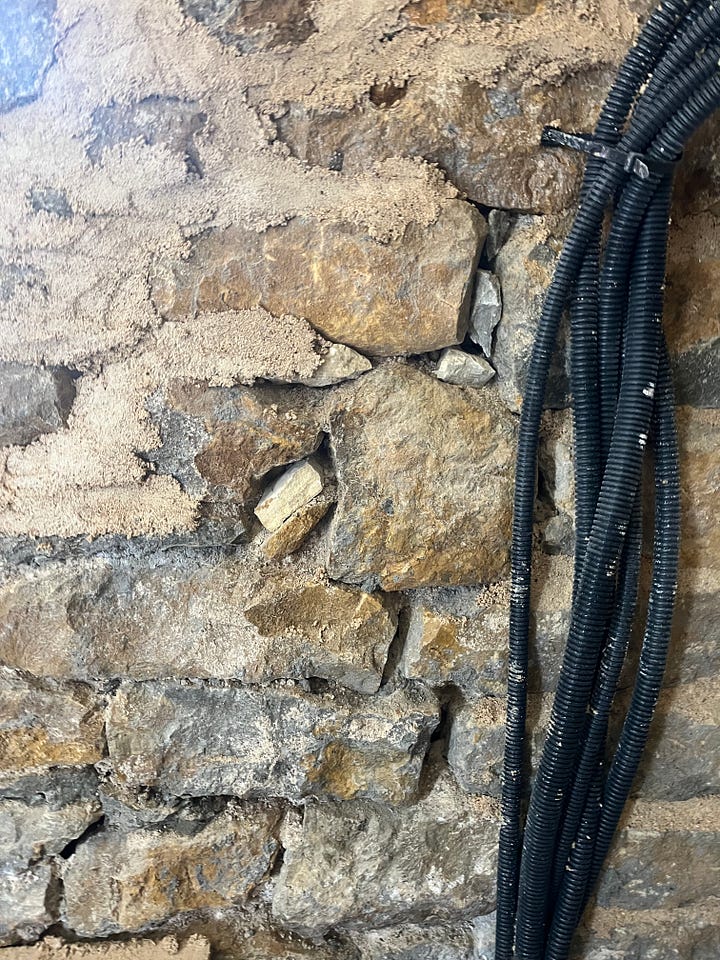
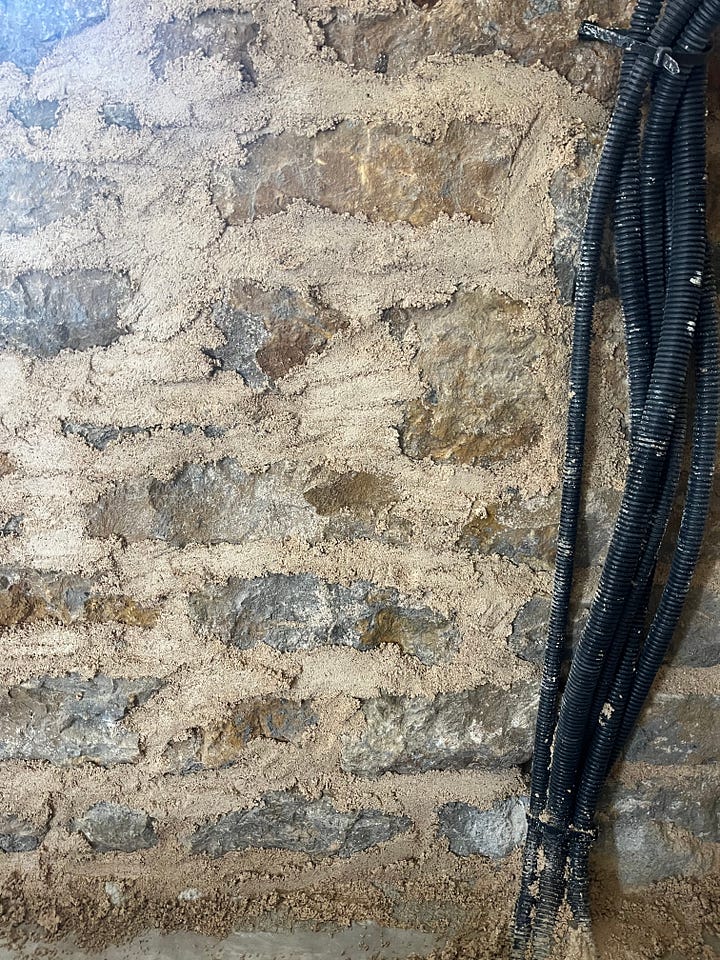
After completing a section, we leave it for a few hours, or overnight and then come back to brush it back with wire brushes, revealing the edges of stones where we’ve ladled it on thick, hoping for a uniform finish and usually looking at something slightly less than uniform.
I’ve taken to examining pointing on other buildings in more detail than I strictly should; comparing and critiquing, and scoffing and admiring.
Once complete, you can see where our skill has improved on the wall as you move round.
The room looks like it’s always been like this, which I guess in a sense it was for a long time, at least until the previous owners but one decided to put concrete render everywhere and construct a monstrosity of a fireplace in front of the old bread oven. The purple paint on the wall render was the pièce de resistance.
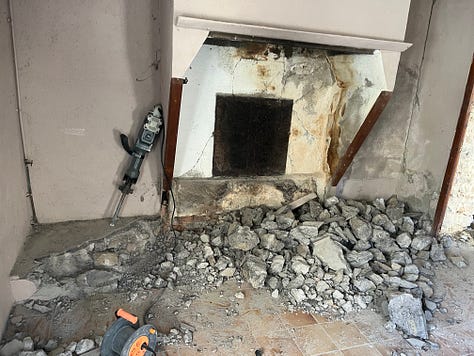
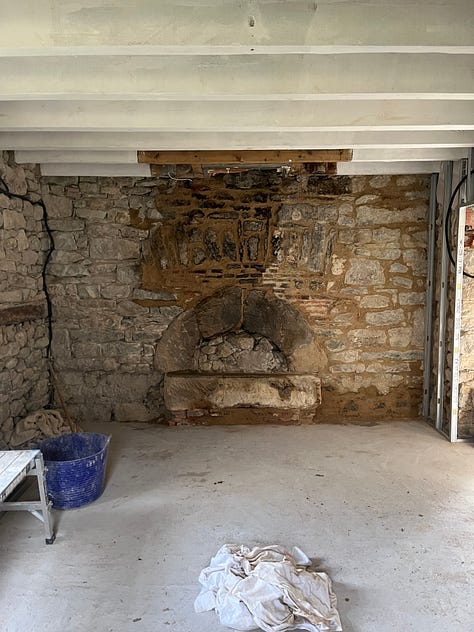
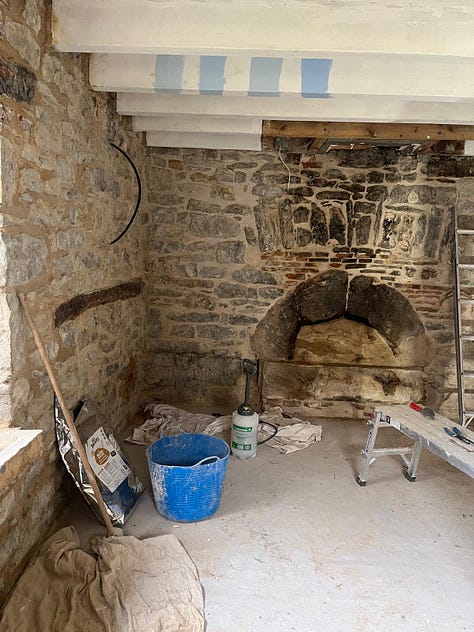
Next on the agenda is plasterboard, more specifically the new bathroom walls, as well as the one wall in the living space that will serve as the kitchen. Our builder mate Patrice is coming round next week to lend us his plaster board lifter so we can do the bathroom ceiling, which is great news and saves us renting one.
More generally the signs of spring are well and truly here; cooler mornings still but when the sun comes out in the afternoons is verging on t-shirt weather. Which of course means the relentless cycle of mowing and strimming will shortly be underway too.






Armchair following this amazing undertaking, we have the utmost admiration for you both. Your energy and all the skills you’re honing. Looking forward to booking in one day. Love from us both.
That looks hard work. But you’ve done a great job so far.
As ever, Well done 😘👏😘👏